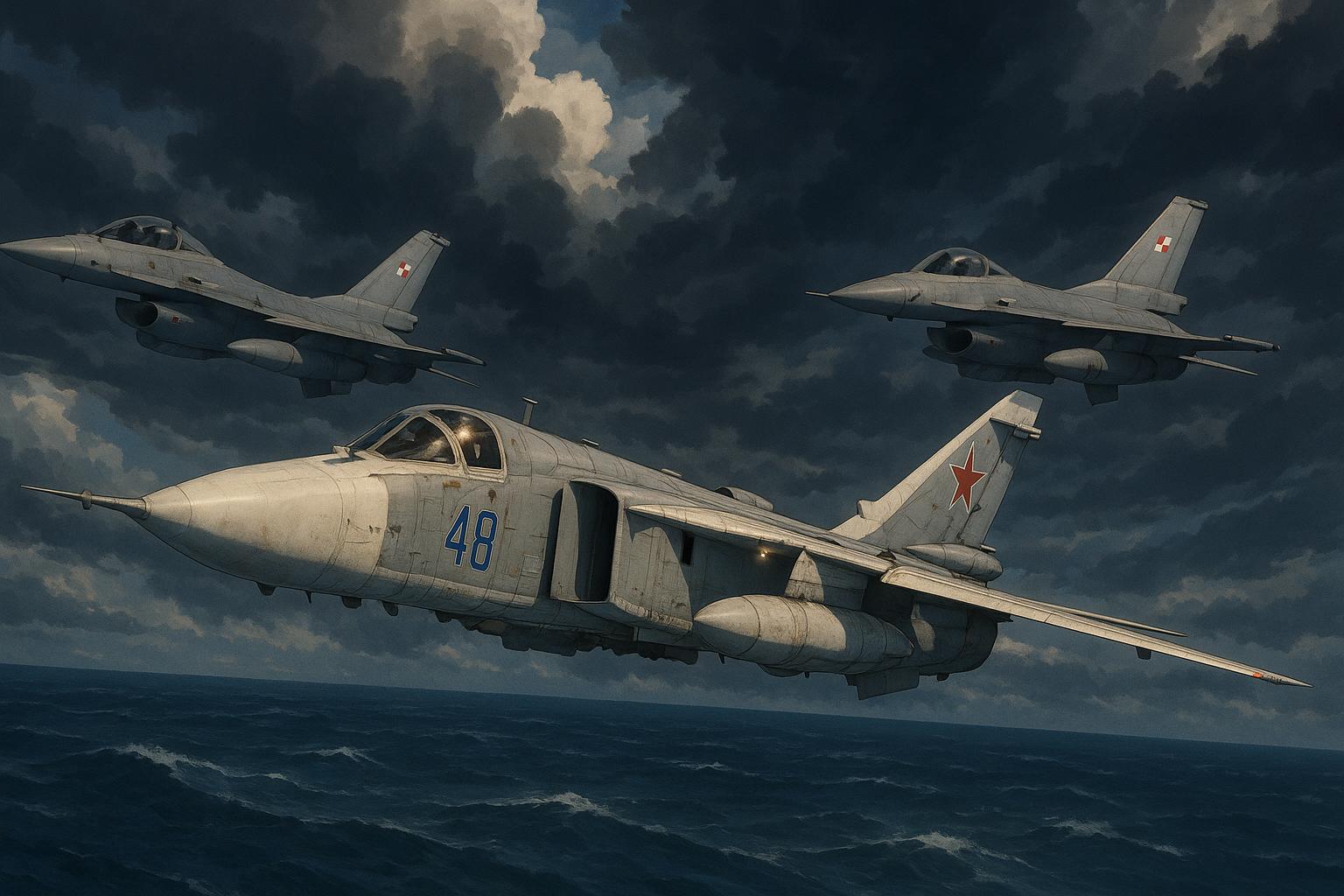A Russian Su-24 fighter jet was intercepted by the Polish Air Force over the Baltic Sea, a move confirmed by Polish Defence Minister Wladysław Kosiniak-Kamysz. According to his statement, a pair of Polish jets were scrambled following an order from NATO’s joint operational command to intercept the aircraft. The Polish jets located the Russian fighter in international airspace late Thursday and managed to 'effectively deter' its actions. Kosiniak-Kamysz remarked on the manoeuvres of the Su-24, stating they indicated deliberate intentions rather than accidental actions, reflecting a pattern of increasing tensions in the region.
This incident is far from isolated. Just earlier this week, Poland reported a sanctioned Russian vessel engaging in 'suspicious manoeuvres' close to a critical power cable connecting Poland and Sweden. Such activities have raised alarms among NATO allies, especially as military exercises are being conducted in the region. Notably, NATO troops have been undertaking training exercises on the strategically significant island of Gotland, which has been under consideration for remilitarisation due to the perceived threats posed by Russia.
Moreover, Poland's military interactions with Russian aircraft have escalated over recent months. Earlier in February 2025, a Russian Su-24MR reconnaissance aircraft violated Polish airspace, temporarily penetrating 6.5 kilometres before altering its course upon Polish military intervention. This and other similar incidents underline a troubling trend of Russian military incursions into neighbouring airspaces, prompting concerns regarding potential miscommunications that could lead to conflict.
The ongoing retired Russian military activities in the Baltic are part of a broader context of rising tensions following the invasion of Ukraine in February 2022. Military operations from Russia have increasingly disrupted the stability of airspace, evidenced by the flyovers of U.S. Navy ships during joint exercises like BALTOPS 24, where Su-24 bombers conducted unprofessional passes over American vessels.Such encounters not only pose risks of miscommunication but also threaten the safety of operations involving NATO forces in the region. A notable incident involved Russian Su-24s flying uncomfortably close to the USS Wasp, leading to disruptions during critical flight operations. U.S. Navy officials subsequently deemed this conduct unsafe, reinforcing the importance for all parties involved in international waters to adhere to professional standards to avoid dangerous miscalculations.
Recent reports have also highlighted an uptick in Russian naval activity, with UK warships actively tracking Russian submarines in the English Channel, a sign of heightened vigilance among NATO allied forces. This comes against the backdrop of large-scale military buildups near Finland's borders and growing anxieties that Russia is accelerating its military preparations for a prolonged conflict with Western nations. Finland's Prime Minister has echoed these sentiments, warning that an attack on Finland or its Baltic neighbours cannot be ruled out.
In response to these developments, Poland has called for enhanced protection measures in the Baltic region to safeguard against potential sabotage and air incursions. This situation has become a focal point of NATO’s ongoing strategy to bolster defence in Eastern Europe, ensuring that the alliance maintains readiness against any aggressive posturing from Russia. The security of the Baltic Sea continues to be a significant concern, as aerial and naval encounters between NATO forces and Russian military assets appear increasingly likely.
As these dynamics shift, the tension in the Baltic Sea highlights the critical need for robust communication and adherence to established protocols among military forces operating in shared international spaces. The ongoing vigilance and readiness of NATO air and naval assets are integral to deterrence efforts and maintaining stability in a region marked by unpredictable military behaviour.
Reference Map:
- Paragraph 1 – [1], [2]
- Paragraph 2 – [1], [3]
- Paragraph 3 – [3], [4]
- Paragraph 4 – [5], [6]
- Paragraph 5 – [7]
Source: Noah Wire Services
